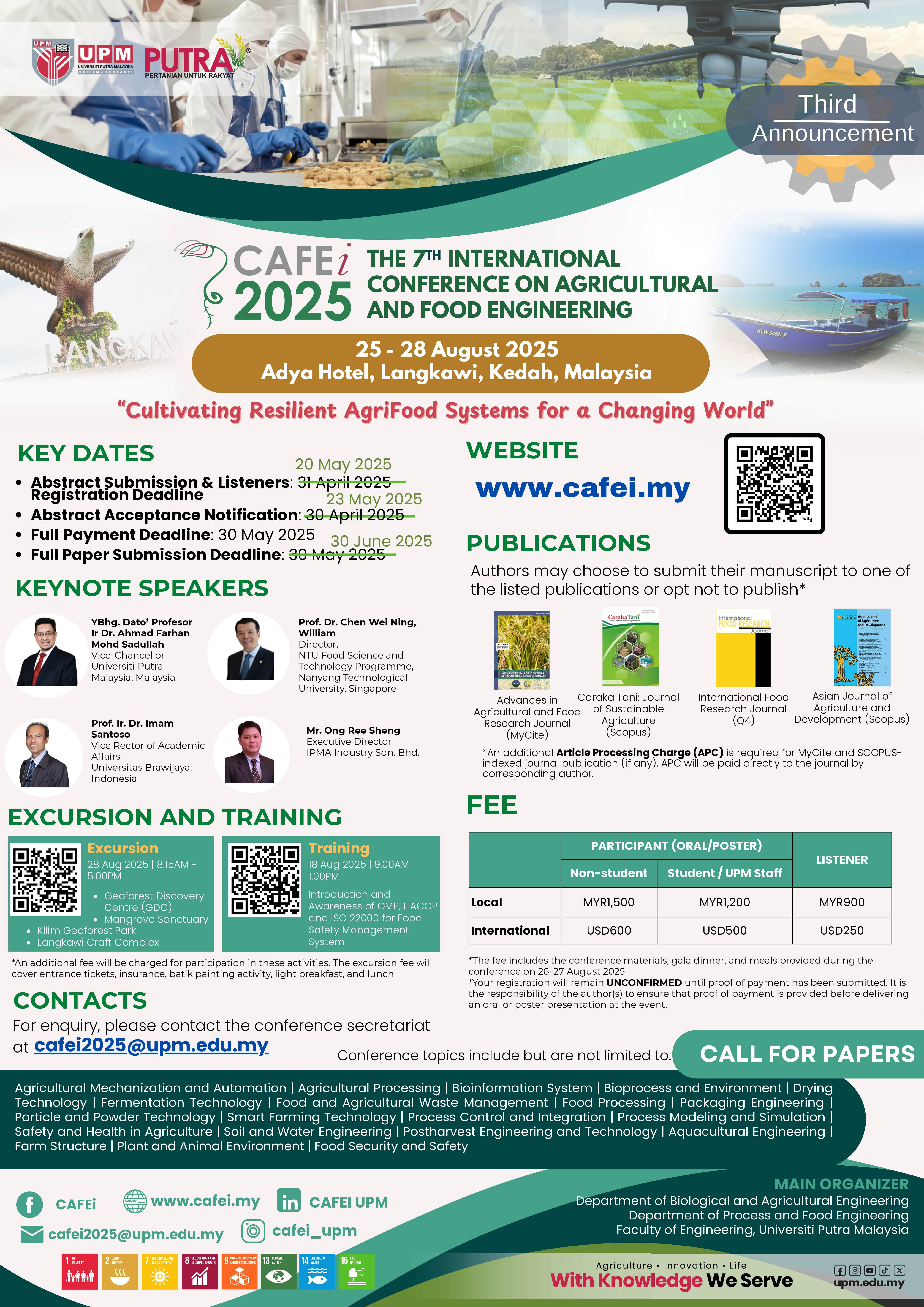Performance Comparison of Harvesting Performance of Different Harvesting Methods in Oil Palm Plantation
DOI:
https://doi.org/10.36877/aafrj.a0000410Abstract
Mechanisation in oil palm industry has long been promoted in order to increase the efficiency and productivity of the industry but its adoption is low. One of the reasons is the skeptical view of high cost in mechanisation adoption and the lack of productivity data to compare the performance of manual versus several mechanised operations. This paper attempts to analyse the performance of different harvesting methods available in oil palm industry and assess the efficiency of each method. This study compared the fresh fruit bunch (FFB) harvesting performance of manual, mechanised cutter, i.e. CANTAS and an excavator based harvesting machine. The price and productivity data of each method were taken from literature. The capital (CAPEX) and operation (OPEX) expenditure in terms of cost per tonne were calculated based on the collected data. The result of each method’s performance was then projected in the form of labour to land ratio to determine the efficiency of each method. The CAPEX of harvesting machine is the highest which was RM 280,155.55, followed by CANTAS with RM 3806.33 and manual harvesting for RM 601.00. This reflected to the slightly higher OPEX which was RM 46.45/tonne, compared to CANTAS of RM 28.72/tonne and manual harvesting with RM 39.35/tonne. The machine was shown to cover more plantation area for harvesting with labour to land ratio of 1:86 ha, compare to 1:35 ha for CANTAS and 1:21 ha for manual harvesting. In conclusion, mechanised harvesting machineries increased harvesting efficiency by covering more plantation area. Although mechanisation adoption is unfavourable due to initial capital cost, the difference in OPEX between manual and harvesting machine is shown to be small, and even lower if compared with CANTAS in the long term.
Downloads
Published
How to Cite
Issue
Section
License
Copyright (c) 2023 Ahmad Syazwan Ramli, Mohd Azwan Mohd Bakri, Mohd Rizal Ahmad, Nabilah Kamaliah Mustaffa, Mohd Ramdhan Mohd Khalid, Ikmal Hafizi Azaman

This work is licensed under a Creative Commons Attribution-NonCommercial 4.0 International License.
Author(s) shall retain the copyright of their work and grant the Journal/Publisher right for the first publication with the work simultaneously licensed under:
Creative Commons Attribution-NonCommercial 4.0 International (CC BY-NC 4.0). This license allows for the copying, distribution and transmission of the work, provided the correct attribution of the original creator is stated. Adaptation and remixing are also permitted.

This broad license intends to facilitate free access to, as well as the unrestricted reuse of, original works of all types for non-commercial purposes.
The author(s) permits HH Publisher to publish this article that has not been submitted elsewhere.

.png)

.jpg)



